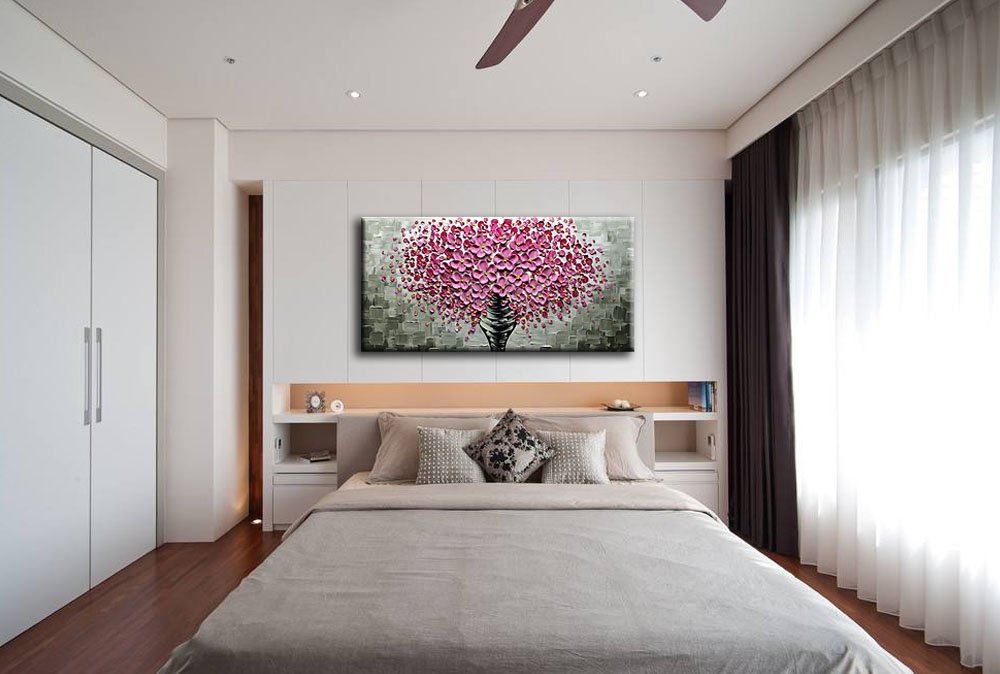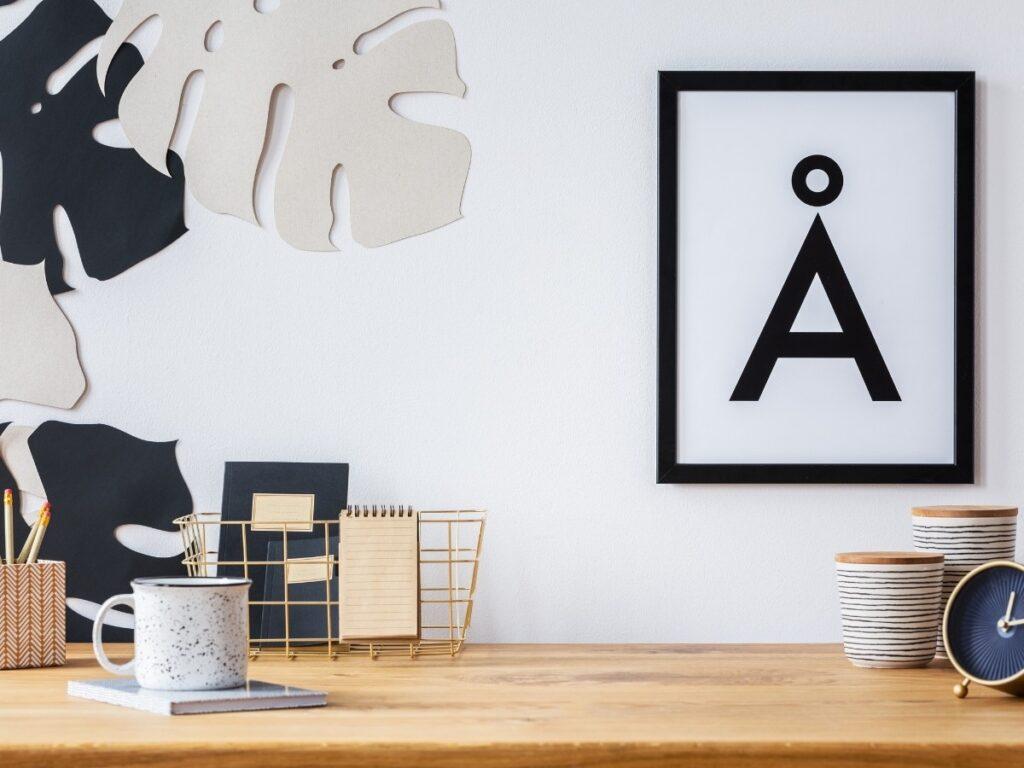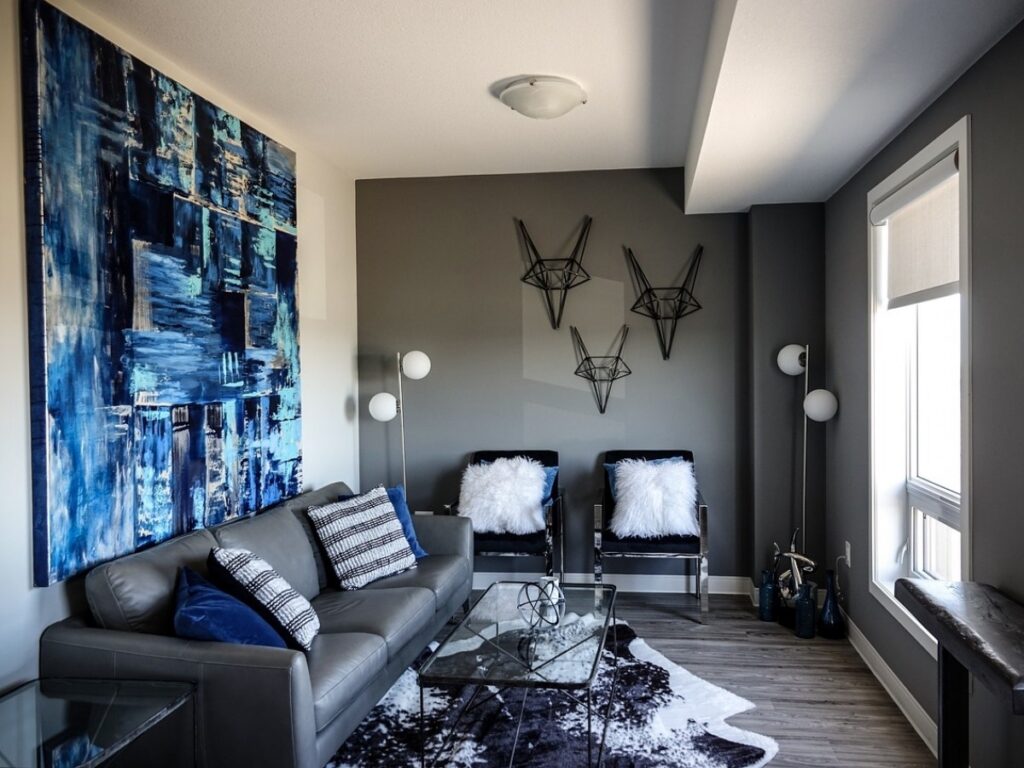Choosing the right piece of art can be an overwhelming concept for some. But selecting art for your home is easy if you follow these simple principles.
When selecting art for the home, many people simply select a painting that appeals to them visually, others will spend days, weeks… even months researching the background on the artwork, the artist, and the medium of the artwork.
Both methods have merit, but there are some important considerations to review, especially if you’re purchasing in an original or limited edition print that… which are half enjoyment, half investment.

Art is subjective. And it doesn’t matter if you’re spending $99 on a canvas art reproduction or $432,000 on a unique piece of art from a well-known artist.
It’s your home, so the art you select has to be right for you, your tastes, and your lifestyle. But, for some reason, people sometimes struggle with picking the right piece of art. Perhaps for fear of being judged if they pick the wrong one? Or, perhaps, because they simply don’t trust that inner voice that says, “Ooohhh, I like that!”
Select a Piece of Art That Enjoy Looking At

As much as the intrinsic value of an art piece, alone or as part of the artist’s collective works, may play a role in your selection of a work of art, for most people the most critical element is… will you enjoy looking at it in the months and years to come?
If the answer is yes, plus the backstory on the artwork intrigues you, then you have the perfect scenario for investing in a piece that will bring you enjoyment for years to come.
Make Sure The Piece of Art You Choose Will Suit the Space

Art that is too large will overwhelm and art that is too small will be lost and look out of proportion. The bolder the art, the more room it needs to breathe. Measure the space you want to hang the art and leave enough “white space” so that the painting will not feel crowded.
When selecting a painting to match color, select one or two of the boldest colors in your room and look for art that has those colors in it. You’re not looking for an exact match here. Picking up one or two of the same colors will send a message that the painting belongs in this environment.
It’s also important to understand what kind of room you are selecting art for. After all, art for the kitchen is often going to have a different mood and subject matter than art for the bedroom.
Style is another consideration when selecting art to fit a room. If your house is filled with antiques, for example, you’ll want to use antique-style frames on the paintings you hang there. If you have contemporary furniture in large rooms with high ceilings, you’ll want to hang large contemporary paintings.
Choosing art you love is the most important criteria. But you may find that when you get the art home and place it on a wall or pedestal, it doesn’t work with its surroundings. If you bring a painting home and it clashes with its environment, first try hanging it in various rooms on different walls. It may look great in a place you hadn’t planned on hanging it. If you can’t find a place where the art looks its best, you may need to make some changes in the room, such as moving furniture or taking down patterned wallpaper and repainting in a neutral color. The changes will be worth making in order to enjoy the art you love.
Decide What the Main Focal Point of the Room Is and Go From There

There is an age-old debate regarding which comes first, the art or the decor that surrounds it. And, from what we’ve seen, there is no true answer.
For some (including art purists), the painting comes first, and the other elements of the room (the wall color, the curtains, the accessories) are brought in to complement the artwork.
For others, the room style, colors, and themes are set and the piece of art is chosen based on how it will suit its surroundings.
Both viewpoints are valid, as they come from completely different perspectives and meet completely different needs.
Whichever direction you take, it is important that a piece of art works within a room… unless discord is the effect you are seeking.
That is not to say that all of the colors or themes of a painting need to be represented in the room it is being shown. A central color, or the “essence” of the theme are usually enough to make a piece of art fit into a space, from an emotional perspective.
Finally, there is a different approach taken when art is used as a room’s focal point vs. when art is used to accent a room’s decor.
To make art the center of attraction in a particular room of your house, play down the other design elements such as window coverings, carpeting, wall coverings, and even furniture. A room crowded with other colors, textures, and objects will take the spotlight away from the art.
Select Art That Tells a Story You Want To Hear

Art tells a story, either in clear narrative or emotional appeal. It doesn’t matter if the colors match perfectly, if the story your art portrays is not one you wish to see over and over again, then your piece of art will become a sore point in your home’s decor, rather than the timeless treasure artworks should be.
When selecting art for your home, pay attention not just to the colors and the size, but to the message and the theme of the artwork. Is there a point of view that you agree with in this piece? Is it something you can describe to others in a way that makes you happy that you own that piece of art?
Decide For Yourself if It’s the Art or the Artist That is Important To You

A large part of the decision-making process has to do with deciding if you are seeking a piece by a specific artist, or if you are selecting the artwork based solely on its own merits.
For example, many collectors will focus on specific artists, looking for pieces by them specifically. Or, you may find that a particular artist’s style suits your particular tastes, so you may purchase several from the same artist. Claude Monet and Vincent van Gogh are too traditional artists that many collectors will look for specifically. Contemporary artists that are currently in high demand include Erin Ashley, Jennifer Lommers, Liz Jardine, and Eric Waugh… just to name a few.
Hanging Your New Artwork

As a general rule, hang your paintings so that the focal point or center of the painting is at eye level. However, rules are – as always – sometimes made to be broken. So, feel free to experiment. Oil on canvas paintings should be hung in a location where there isn’t excessive moisture, and direct sunlight should be avoided, as this will fade the painting over time. Make sure your artwork is hung on a sturdy hook, and properly affixed to the wall. In areas of high traffic, double-hook hanging is usually recommended.
Some Fun Art Quotes
These paintings may be easy to call insignificant by a critic, but they are precious to the people who bring them into their home.
~ Thomas Kinkade
You come to nature with all her theories, and she knocks them all flat.
~ Pierre Auguste Renoir
A work of art which did not begin in emotion is not art.
~ Paul Cezanne
Colour is my day-long obsession, joy and torment.
~ Claude Monet
Abstract art places a new world, which on the surface has nothing to do with ‘reality,’ next to the ‘real’ world.
~ Wasilly Kandinsky


I’m glad you talked about how canvas paintings shouldn’t be hung around direct sunlight. Since I just moved to a new home, I want to add more art pieces in my living room and bedroom. I’ll be sure to find some unique paintings that celebrate life.